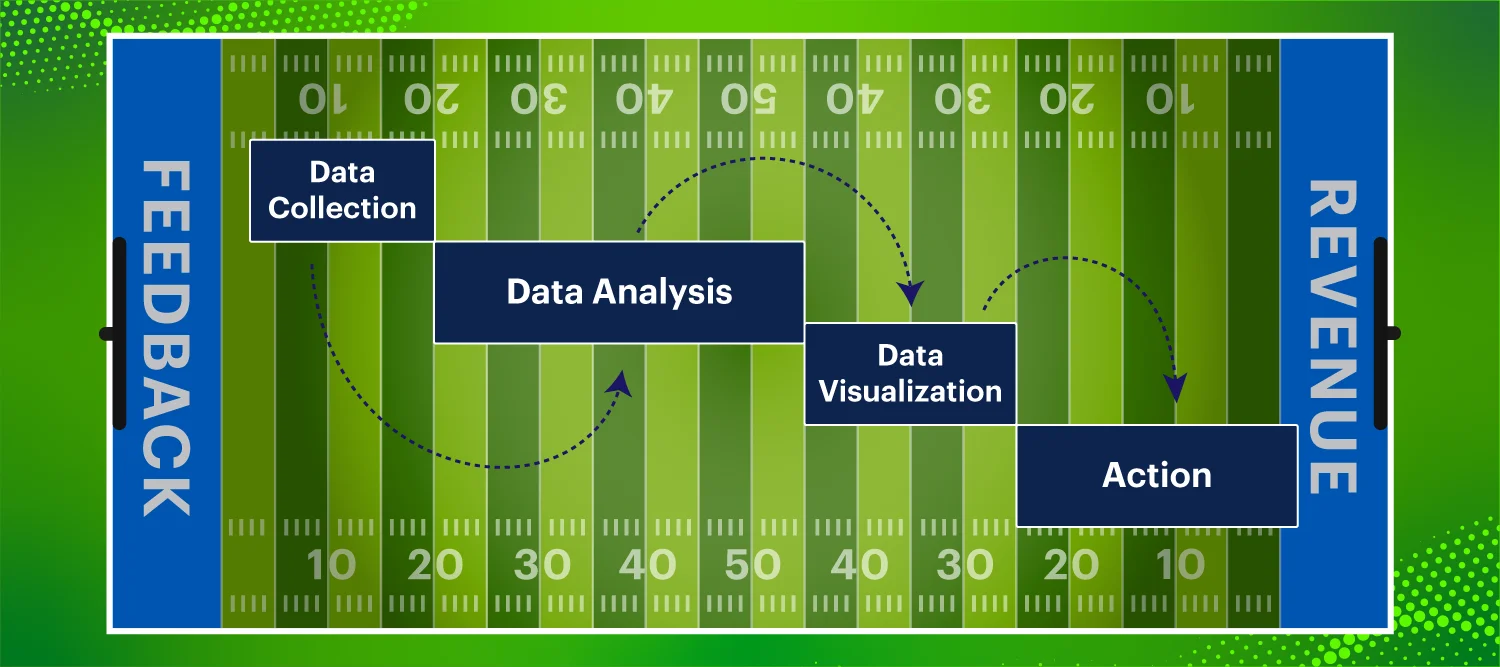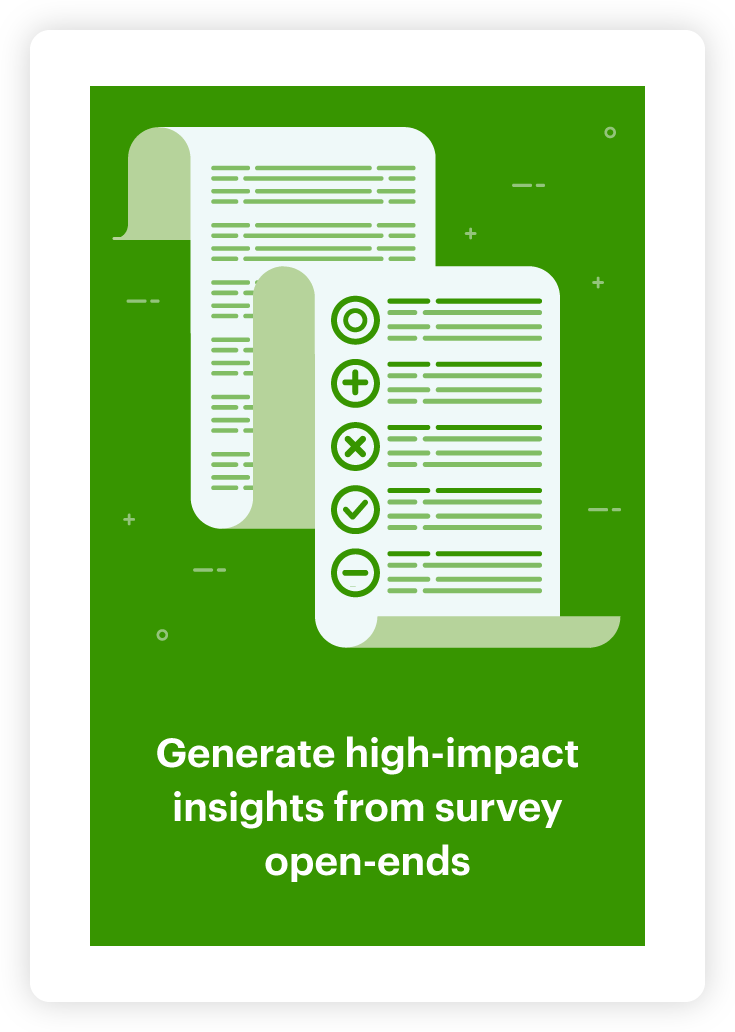Building championship-caliber fan experience programs with repeatable tactics

Discerning what’s vital in fan feedback can be a thankless task. Sports teams have the most volatile survey responses of any sector — with on-field performance determining how supporters react to post-game questionnaires.
They say winning solves everything, and that’s certainly true when it comes to fan experience.
Extortionate food prices? Doesn’t matter because we won! Getting away from the stadium took hours? More time to bask in victory!
But to build an impactful fan experience program, your analysis needs to have enough rigor to be unaffected by wins and losses. You need to be able to cut through on-field ups and downs and find out what matters to supporters beyond the result.
This is where you should be using artificial intelligence. Due to time constraints and human bias, it’s almost impossible to effectively decode, analyze, and act on fan feedback at the necessary speed.
Incorporating an AI element enables you to keep on top of any issues and demonstrate to fans that you’re listening and responding to their concerns.
This is vital when it comes to driving key revenue sources, such as season ticket holders renewing or upgrading. Addressing their feedback throughout the season and enhancing their experience will significantly improve renewal and upgrade rates.
However, it’s not enough just to state “we need some AI”. You need to know how to use it and where in your process it can make the biggest difference.
That’s why you need a robust fan experience insights process in place as a foundation — you can augment it with artificial intelligence.
For fan experience teams, this process will consist of data collection, data analysis, data visualization, and action.
You likely have many of these processes already in place; but how effectively do they work together?
Data collection for fan experience programs
This is the first step, which you’re likely doing already. Post-game surveys, season ticket member surveys, fan engagement surveys, perhaps even gathering social listening data; you will be collecting fan feedback in some form.
There are two areas where we find sports teams can improve when collecting fan experience feedback.
The first is frequency. Whatever way you choose to collect feedback, it needs to be consistent. Ideally, this will be on a game-by-game basis, but if it isn’t then it needs to be at regular intervals.
For example, given the volatility of fans’ reactions after a loss, some teams don’t collate feedback following a defeat due to the negativity. Not only does this disrupt a consistent analysis cycle, but you’re also missing out on fans at their rawest — where they will reveal what else upsets them.
If you’re not analyzing feedback over consistent periods of time, then your basis for comparison is flawed — allowing fans’ frustration to grow.
Keep it consistent!
The second area where teams can improve is collecting free-text feedback.
Ideally, your survey should be structured to ask a series of quantitative questions (e.g. Out of ten, how would you rate concession stands at today’s game?), followed by an open-ended question asking why.
It’s this open-ended response that tells you want fans think and enables you to make changes that improve fan experience. As it has been difficult to analyze these types of questions, teams often limit them to a single “Is there anything else you want to add?” query at the end of the survey.
This rarely extracts anything valuable. Instead, structure your survey so that quantitative and qualitative questions have equal importance.
Analyzing fan experience data effectively
To continue the theme of open-ended responses, it’s here that most fan experience analysis processes break down.
It’s very easy to segment and analyze quantitative responses; any survey tool worth its salt will do this for you. However, when it comes to analyzing open-ended responses, many organizations still rely on word clouds.
Why is this suboptimal? Well, can you think of a time when your stakeholders took action because you counted the number of times fans used a particular word?
You need defendable metrics to initiate change. When quizzed by decision makers, you need to demonstrate why your recommendations will move the needle with fans.
Using AI tools enables you to augment your existing workflow, with the benefits of extracting better insights from currently underutilized open-ended responses.
Engaging stakeholders with visualizations
Whether it’s a monthly report, a dashboard or another alternative, you probably already share your findings with stakeholders.
There’s no cookie-cutter approach to reporting, you need to do what works well within your organization. But, whatever your approach, it needs to include metrics, evidence and audit.
Metrics are crucial. You’re not going to convince your organization’s leaders to make a revenue-based decision on your ‘gut feeling.’ Instead, you need metrics that are easy to understand, connect with leaders and demonstrate a clear course of action.
Then you need evidence to back up those metrics. This is where rigorous, AI-powered analysis of open-ended feedback comes to the fore. You’ll quickly have examples of where your fans are demanding this change.
Finally, there’s audit. To justify decisions, you need to be able to demonstrate how you’ve arrived at your conclusions.
This is why you need to incorporate the right type of AI into your CX insights process. Being able to show your workings is vital when bringing stakeholders on a decision-making journey.
If you’re using AI-powered software that acts as a black box, you won’t be able to show the process behind your recommendations — making it unlikely they’ll be actioned.
Taking action
Taking action is the most important of the four steps, but the hardest to execute.
To maximize your impact, you should:
- Collect both quantitative and qualitative fan feedback
- Analyze it efficiently and rigorously
- Demonstrate through visuals or a report that your recommendations will positively impact fan experience
Following the 4-step framework will bring your decision makers on the journey with you. Your day to day will already include most of these processes, the key is bringing them together in one best-in-class fan experience program.
Want to find out more on how you can use AI-powered technology to enhance your fan experience program? Download my report on the subject.
